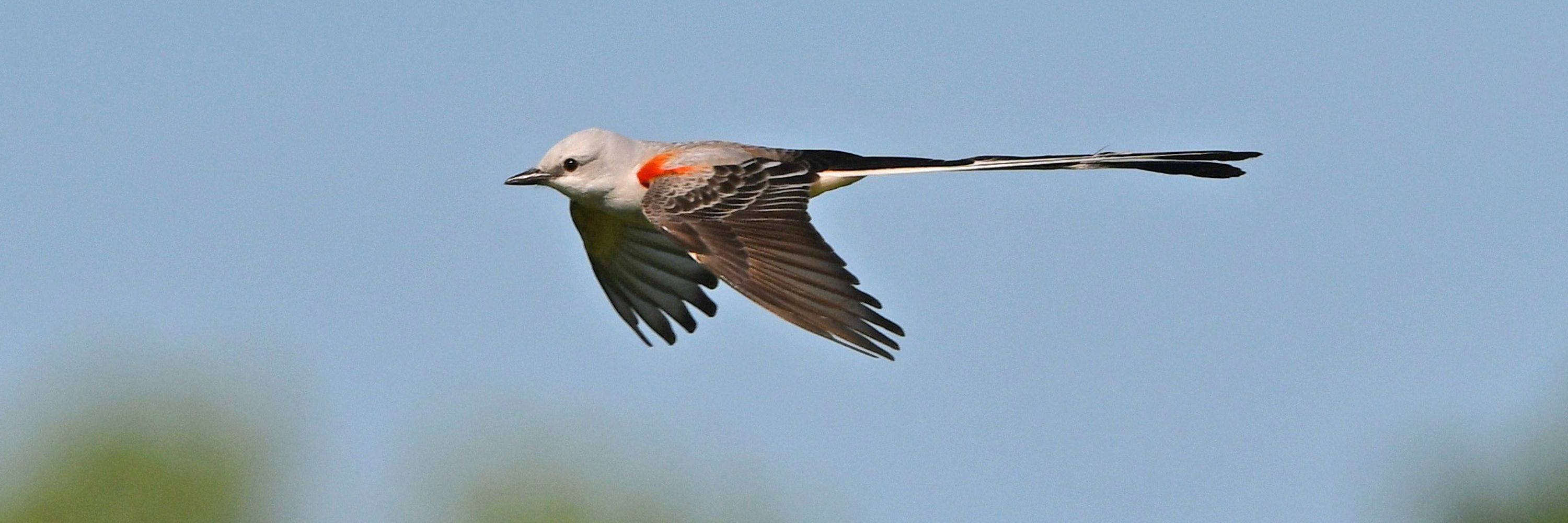
Jeremy Cohen
@drjerbs.bsky.social
Early career research scientist at Yale, macroecology, quantitative climate change ecology, avian ecology, GIS and species distribution models, scale in ecology.... birder, photographer, human dad, cat dad, baseball fan
Leading a organized session at #WBF2026 on climate change and biodiversity! Titled "Linking anthropogenic climate change to shifting biodiversity patterns". If submitting an abstract, you can send it directly to the session (under NEX track)! worldbiodiversityforum.org

November 3, 2025 at 7:19 PM
Leading a organized session at #WBF2026 on climate change and biodiversity! Titled "Linking anthropogenic climate change to shifting biodiversity patterns". If submitting an abstract, you can send it directly to the session (under NEX track)! worldbiodiversityforum.org
🚨Now out in @pnas.org! Our group provides a framework to mathematically link environmental niches from individual to population and species scales. Our approach enables more accurate forecasting of biodiversity change across organismal levels. 🧪 www.pnas.org/doi/10.1073/...

September 2, 2025 at 3:25 PM
🚨Now out in @pnas.org! Our group provides a framework to mathematically link environmental niches from individual to population and species scales. Our approach enables more accurate forecasting of biodiversity change across organismal levels. 🧪 www.pnas.org/doi/10.1073/...
Species’ historical niches are becoming increasingly mismatched with contemporary climates even in a highly mobile taxon like birds, raising concerns about the ability of other wildlife to persist in a warmer world. Other wildlife may have to rely on phenological or behavioral changes.

June 10, 2025 at 4:35 PM
Species’ historical niches are becoming increasingly mismatched with contemporary climates even in a highly mobile taxon like birds, raising concerns about the ability of other wildlife to persist in a warmer world. Other wildlife may have to rely on phenological or behavioral changes.
We found similar results when repeating these analyses using eBird alone or Breeding Bird Survey data, highlighting the robustness of the findings.
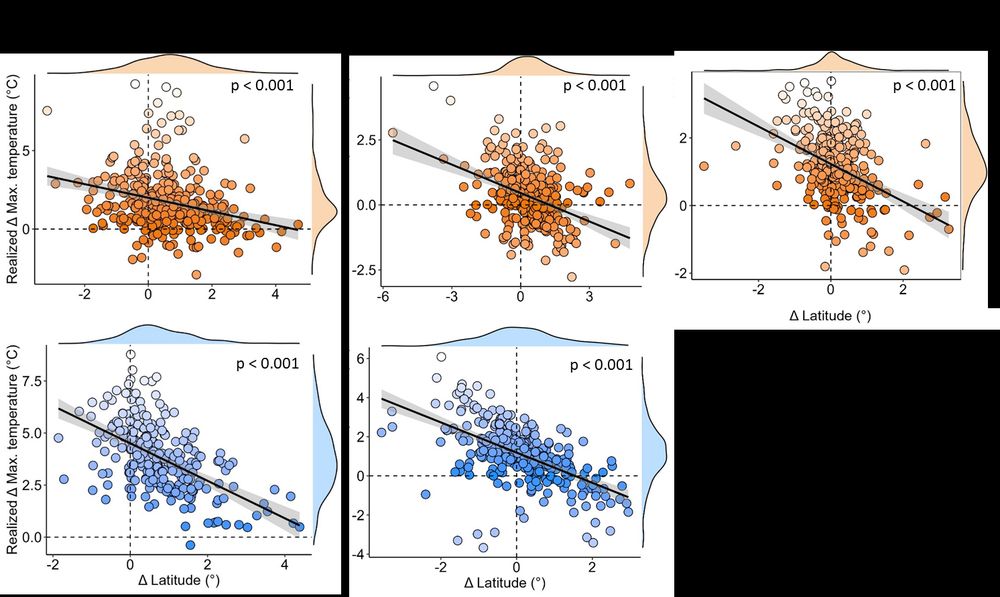
June 10, 2025 at 4:35 PM
We found similar results when repeating these analyses using eBird alone or Breeding Bird Survey data, highlighting the robustness of the findings.
Species possessing traits associated with dispersal, such as long-distance migratory behavior or high hand-wing index, succeeded most in limiting their niche loss (partial residual plots).
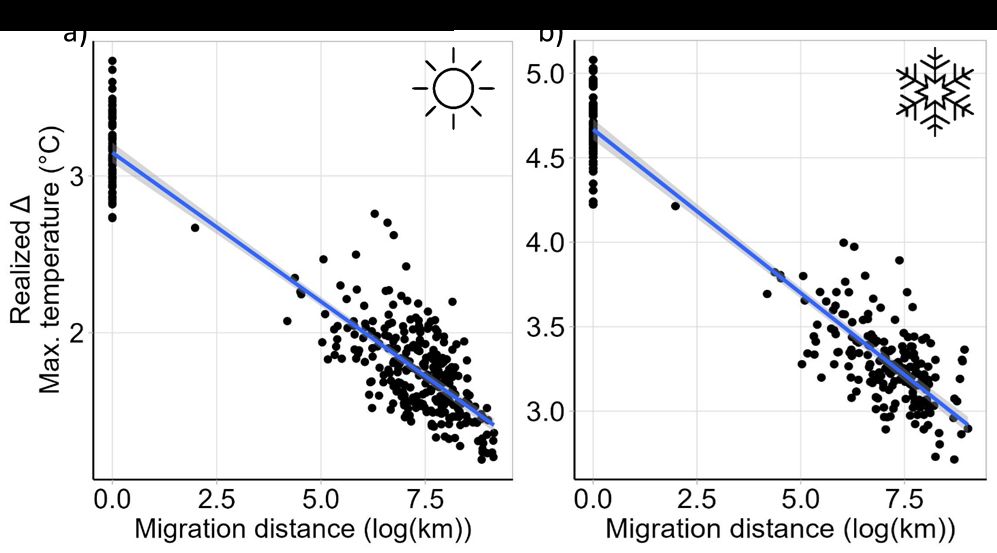
June 10, 2025 at 4:35 PM
Species possessing traits associated with dispersal, such as long-distance migratory behavior or high hand-wing index, succeeded most in limiting their niche loss (partial residual plots).
Species moving the furthest north succeeded most in limiting their niche loss. Move north, avoid warming. However, only very few species moved north far enough to fully erase their exposure, and in most cases they only partially limited their exposure.
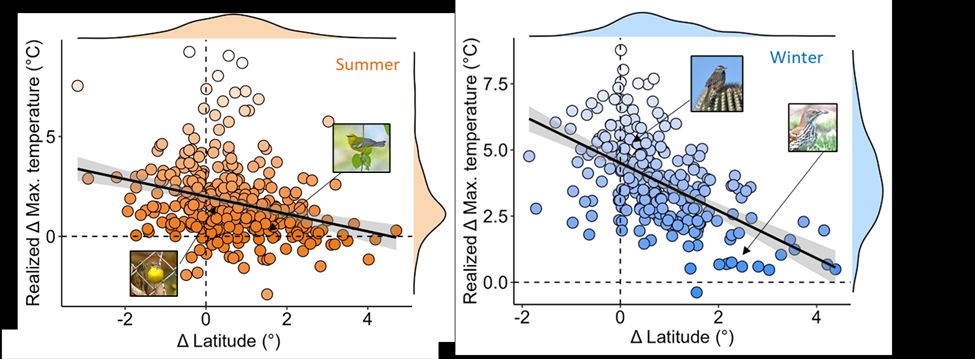
June 10, 2025 at 4:35 PM
Species moving the furthest north succeeded most in limiting their niche loss. Move north, avoid warming. However, only very few species moved north far enough to fully erase their exposure, and in most cases they only partially limited their exposure.
Therefore- species averted much more of their expected exposure in summer, when they are more at risk of physiological consequences of heat stress- but still only avoided half of the expected warming in this season.

June 10, 2025 at 4:35 PM
Therefore- species averted much more of their expected exposure in summer, when they are more at risk of physiological consequences of heat stress- but still only avoided half of the expected warming in this season.
Most redistributions were only partially effective. Species moved their ranges ~0.65° latitude north in both seasons, mitigating their expected exposure by ~1.28 °C in summer (48% of expected if they were stationary), while only mitigating ~0.47 °C (11% of expected) in winter.

June 10, 2025 at 4:35 PM
Most redistributions were only partially effective. Species moved their ranges ~0.65° latitude north in both seasons, mitigating their expected exposure by ~1.28 °C in summer (48% of expected if they were stationary), while only mitigating ~0.47 °C (11% of expected) in winter.
We developed a method to account for biases in tens of millions of species observations from GBIF and evaluate how 406 bird species native to the US and Canada have mitigated their environmental niche loss using geographical redistributions from 2000-2020.
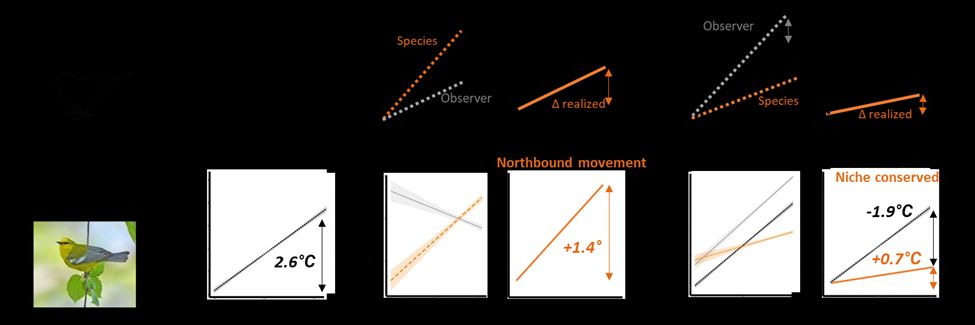
June 10, 2025 at 4:35 PM
We developed a method to account for biases in tens of millions of species observations from GBIF and evaluate how 406 bird species native to the US and Canada have mitigated their environmental niche loss using geographical redistributions from 2000-2020.
As climate change accelerates, species can move poleward (north, in North America) or up mountains to limit their exposure to heat. While these movements have been extensively reported, it remains unclear whether species have succeeded in limiting their exposure to novel conditions.

June 10, 2025 at 4:35 PM
As climate change accelerates, species can move poleward (north, in North America) or up mountains to limit their exposure to heat. While these movements have been extensively reported, it remains unclear whether species have succeeded in limiting their exposure to novel conditions.
NEW SCIENCE! 🚨🚨🚨🧪🪶🌐
Our paper is now online at @natecoevo.nature.com! “Geographic redistributions are insufficient to mitigate exposure to climate change in North American birds”. We know birds are moving north with climate change, but what are the consequences?
www.nature.com/articles/s41...
Our paper is now online at @natecoevo.nature.com! “Geographic redistributions are insufficient to mitigate exposure to climate change in North American birds”. We know birds are moving north with climate change, but what are the consequences?
www.nature.com/articles/s41...
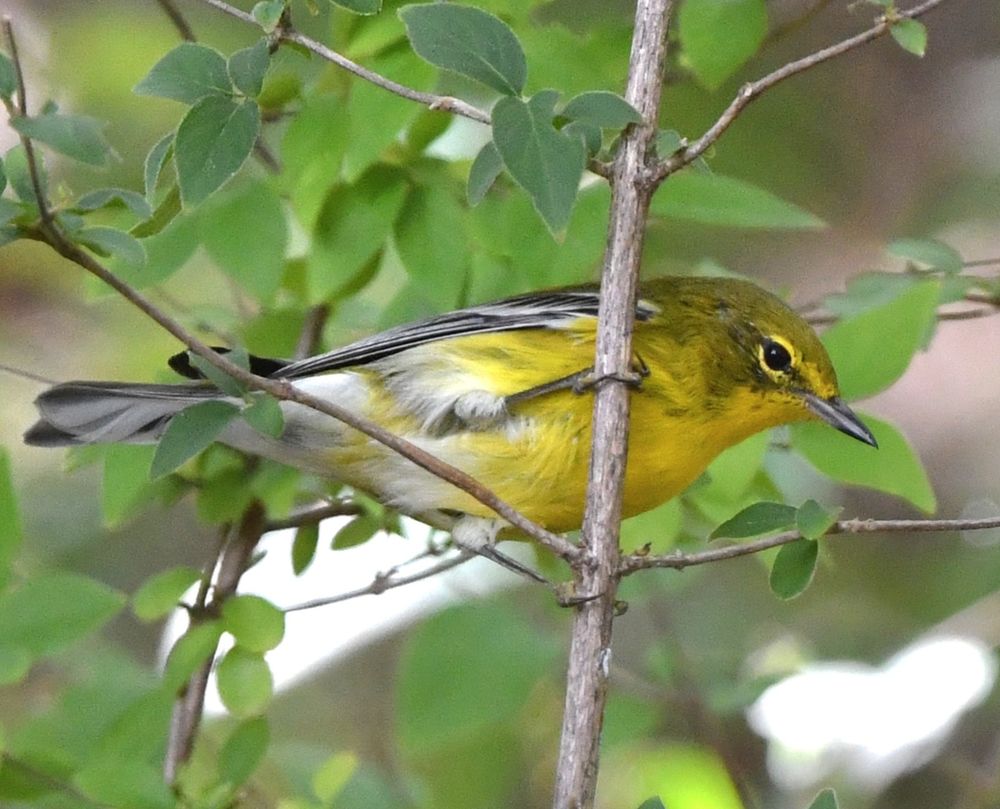
June 10, 2025 at 4:35 PM
NEW SCIENCE! 🚨🚨🚨🧪🪶🌐
Our paper is now online at @natecoevo.nature.com! “Geographic redistributions are insufficient to mitigate exposure to climate change in North American birds”. We know birds are moving north with climate change, but what are the consequences?
www.nature.com/articles/s41...
Our paper is now online at @natecoevo.nature.com! “Geographic redistributions are insufficient to mitigate exposure to climate change in North American birds”. We know birds are moving north with climate change, but what are the consequences?
www.nature.com/articles/s41...
Saw/heard 104 bird species in Florida over Thanksgiving... crossing 100 was a goal I slowly become obsessed with, made tougher with all the best spots being closed due to hurricane. Here's a prairie warbler ebird.org/tripreport/2... 🪶 #birds

December 4, 2024 at 7:17 PM
Saw/heard 104 bird species in Florida over Thanksgiving... crossing 100 was a goal I slowly become obsessed with, made tougher with all the best spots being closed due to hurricane. Here's a prairie warbler ebird.org/tripreport/2... 🪶 #birds
Coarse-grain models can bias seasonal & continental estimates of biodiversity patterns across space and time and grain-related biases intensify during summer & in patchier landscapes, esp. for range-restricted, habitat specialist species at risk of population declines.
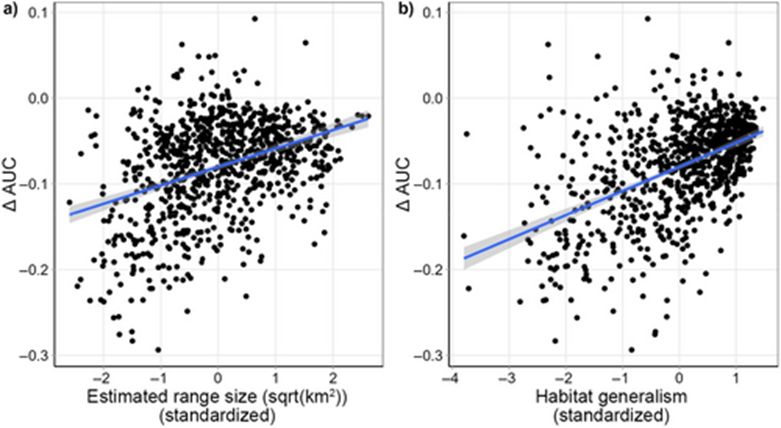
November 22, 2024 at 7:12 PM
Coarse-grain models can bias seasonal & continental estimates of biodiversity patterns across space and time and grain-related biases intensify during summer & in patchier landscapes, esp. for range-restricted, habitat specialist species at risk of population declines.
Biases were greatest in desert regions with patchier habitat and for range-restricted and habitat-specialist species. Predictions based on coarse-grain models overpredicted avian diversity in the west and underpredicted it in the great plains, prairie pothole region and boreal zones.
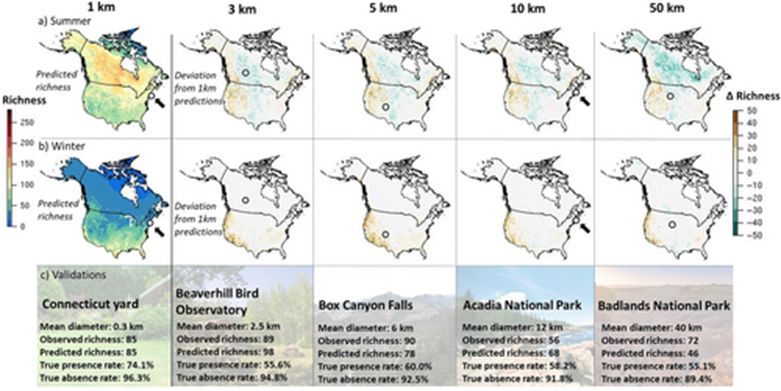
November 22, 2024 at 7:12 PM
Biases were greatest in desert regions with patchier habitat and for range-restricted and habitat-specialist species. Predictions based on coarse-grain models overpredicted avian diversity in the west and underpredicted it in the great plains, prairie pothole region and boreal zones.
Coarse-grain models (even at 3 km) consistently under-predicted range area, potentially missing important habitat. This bias intensified during summer (83%–86% of species) when many birds have smaller ‘operational scales’ via localized home ranges while breeding.
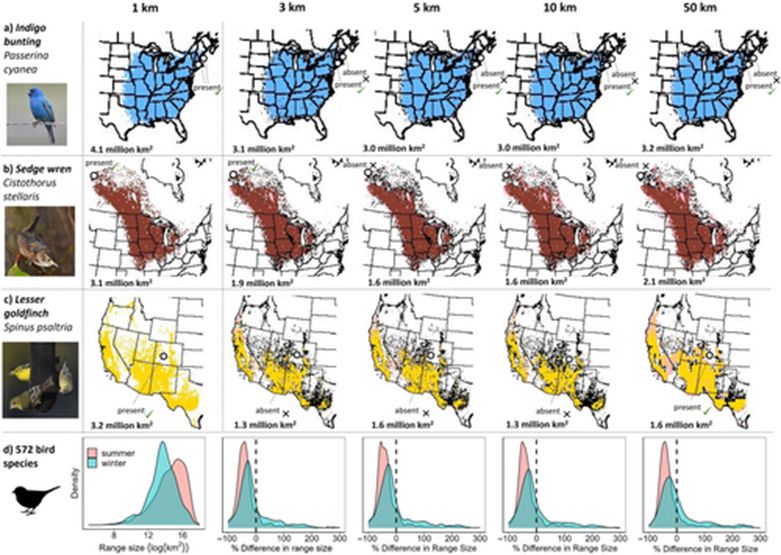
November 22, 2024 at 7:12 PM
Coarse-grain models (even at 3 km) consistently under-predicted range area, potentially missing important habitat. This bias intensified during summer (83%–86% of species) when many birds have smaller ‘operational scales’ via localized home ranges while breeding.
In both seasons, 1 km models more accurately predicted species presence, absence and richness at local sites.


November 22, 2024 at 7:12 PM
In both seasons, 1 km models more accurately predicted species presence, absence and richness at local sites.
We fit SDMs for summer & winter distributions of 572 bird sp native to US/Canada across five spatial grains 1-50 km using eBird. We combined predictions to generate seasonal biodiversity estimates, validated using observations from 322 well-surveyed sites.

November 22, 2024 at 7:12 PM
We fit SDMs for summer & winter distributions of 572 bird sp native to US/Canada across five spatial grains 1-50 km using eBird. We combined predictions to generate seasonal biodiversity estimates, validated using observations from 322 well-surveyed sites.
Eg, coarse-grain biases may intensify in patchy landscapes, accumulating to produce misleading estimates of continental/seasonal biodiversity

November 22, 2024 at 7:12 PM
Eg, coarse-grain biases may intensify in patchy landscapes, accumulating to produce misleading estimates of continental/seasonal biodiversity

November 17, 2024 at 6:18 PM
Birds from spring migration in Arkansas this year (summer tanager, painted bunting, white-eyed vireo, scissor-tailed flycatcher) 🪶#birds .




November 14, 2024 at 6:24 PM
Birds from spring migration in Arkansas this year (summer tanager, painted bunting, white-eyed vireo, scissor-tailed flycatcher) 🪶#birds .
Local adaptation and phenotypic plasticity are likely important but neglected aspects of organismal responses to climate change, and responses likely vary quite a bit below the species level.
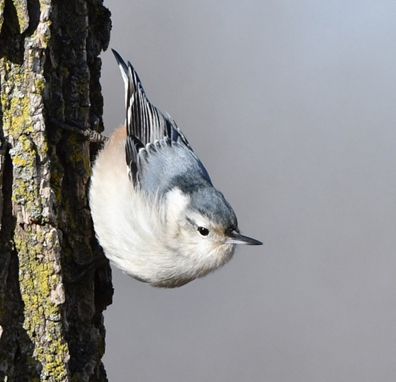
November 12, 2024 at 2:43 PM
Local adaptation and phenotypic plasticity are likely important but neglected aspects of organismal responses to climate change, and responses likely vary quite a bit below the species level.














